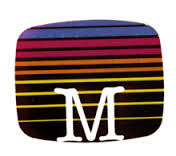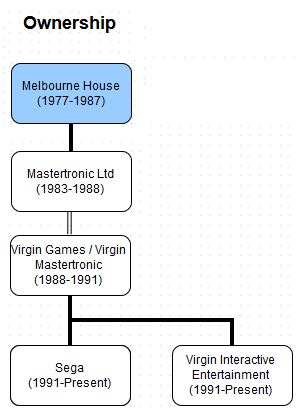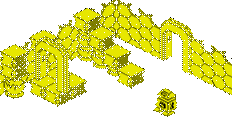|

|
| Founded By: | Alfred Milgrom and Naomi Besen |
| Location: | Melbourne, AU. UK Address was Melbourne House Publishers, 39 Milton Trading Estate, Abingdon, Oxon. OX14 4TD. |
| Year Started: | 1977 |
| Year Wound Up: | 1987 |
| Titles in Database: | 65 |
| Rights Now With: | Virgin Interactive |
| | |
| | |
| | |
| Melbourne House started as a book publishing company, but moved quickly into computer games at the dawn of the home computing era in 1980. They were very successful with titles such as The Hobbit, Sherlock, Way of the Exploding Fist, and more. They even started their own successful software development subsidiary (Beam Software).
They were bought by Mastertronic in 1987. |
Titles per Year

Breakdown by Genre
Breakdown by Platform
|
Added: 21 May 2013
Melbourne House derives its name from the city in Australia where it is based. Formed in 1977 by Alfred Milgrom and Naomi Besen, the company exploited Milgrom's knowledge of computer science and Besen's marketing expertise to move them from being a general publishing company into one exclusively oriented around home computers.
In February 1980, a homesick Alfred Milgrom picked up a copy of The Australian Financial Review and read an article about the growth of computer game publishing in the US. He had been running a London book company named Melbourne House, and the only video game he'd ever really seen was chess on the Apple II.
Suddenly, Sir Clive Sinclair released the Sinclair ZX80, with a massive 1K of RAM. This state-of-the-art home computer sold fast. In August 1980, Melbourne House published one of the first ever books for the personal computer market. It was 30 programs for the Sinclair ZX80, and was an overwhelming success. Since then Melbourne House has been responsible for a very wide range of books for several computers including titles like Spectrum Hardware Manual and Spectrum Microdrive Book. The company also began to distribute games written in the US.
Inspired, Milgrom returned to Australia in 1980 and co-founded Beam Software with Naomi Besen, Australia's first electronic game company. They had one employee and produced machine language games for the ZX80, followed by the ZX81, Sinclair Spectrum, Commodore 16, Commodore 64, Dragon 32, Oric, and other legendary doorstops.
1982, Adam Lancman joins the Beam Group as Financial Director. Melbourne House became so successful that it was able to phase out book publishing and concentrate soley on fabled Beam games like The Hobbit, Lord of the Rings and Way of the Exploding Fist.
1986 was the year of the Way of the Exploding Fist. Widely regarded as the first ever one on one home beat 'em up, this Commodore 64 classic sold over half a million units and was number 1 in sales throughout Europe in 1986, while Melbourne House, Beam's publishing label, titles accounted for 20% of all games sold worldwide in that year.
Melbourne House struggled with financial problems in 1987, and the UK publishing arm and name was bought by Mastertronic. Mastertronic was a publisher and distributor of low-cost ("budget") computer game software, and it was hoped that the purchase of Melbourne House would help them in the foray of full priced games.
"The situation about one year following the sale of Melbourne House was definitely difficult," Alfred Milgrom said. "There was a contractual dispute between Beam and Mastertronics concerning a new product which had been developed by Beam. As a result, all of the work done in 1987 could not be published.
Having bought Melbourne House and with heavy financial commitments to the Arcadia project, Mastertronic itself was now sufferering severe cash flow problems.
Mastertronic was then bought by Virgin in 1988 and the company was renamed the 'Mastertronic Group Ltd', and later was merged with Virgin Games to create 'Virgin Mastertronic'. Virgin then renamed the lot to Virgin Interactive Entertainment, and it seemed that the Melbourne House name was simply forgotten under all these changes.
1989, Adam Lancman becomes shareholder and Joint Managing Director of Beam Group
1991, an Englishman by the name of Andrew Carter finishes a Star Wars game on the NES for Beam/Melbourne House and leaves to create a game company called Motion Pixel Sdn Bhd in Malaysia. He returns later in 1997 to work as Technical Director on KKND: Krush, Kill 'N' Destroy.
In 1996 Beam Software became the first publicly listed games company on the Australian Stock Exchange.
When Beam's directors realised Virgin had allowed the Melbourne House brand to lapse in 1996, they re-register it and launched it as its publishing / game development subsidiary.
"Melbourne House has a great reputation of delivering quality computer games", commented Beam's Chairman and Publisher, Alfred Milgrom. "Now the people that grew up with 'The Hobbit', and a |
Added: 21 May 2013
Company timeline:
1978
Melbourne House (Publishers) Ltd established by Alfred Milgrom and Naomi Besen in the UK as a book publishing company
1980
Melbourne House Publishers become interested in distribution of US computer games and books for the UK market
Sinclair ZX80 released in the UK
Alfred Milgrom writes the first computer book for Melbourne House, '30 Programs for the Sinclair ZX80' and Melbourne House distributes the book in the UK
Alfred Milgrom and Naomi Besen return to Melbourne, Australia, and establish Beam Software as a computer development company
William Tang becomes first Beam employee in December 1980
1981
Sinclair ZX81 released
Melbourne House continues to develop computer books
Commodore Vic 20 released
Beam obtains the licensing rights to 'The Hobbit' by promising to release the book in conjunction with the game, and begins development of a new style of adventure game
1982
Sinclair ZX Spectrum (full-colour computer) released
Commodore 64 released
Adam Lancman joins Beam Software as Financial Director
Hungry Horace and Horace Goes Skiing released. These are packaged with the new Sinclair Spectrum and are the first arcade games for the Spectrum
The seminal game,The Hobbit, is released for the Spectrum. It reaches number one in Europe and creates an obsessive culture of fans
1983
The Hobbit gets converted to most computer formats
Sophisticated arcade game, Penetrator, is released
Melbourne Draw, a graphic toolkit created specifically for the ZX Spectum isreleased. It was user-friendly and had fast screen handling. It was a program that was considered useful to professional graphic artists and programmers
1984
Apple Macintosh released
HURG (High-level User-friendly Real Time Games) released. A revolutionary concept, HURG offered a menu driven program that enabled people with little or no programming knowledge to make their own games.
1985
Geoff Heath is appointed Managing Director for Melbourne House. By this time Melbourne House has 12 full-time employees in the UK.
The highly anticipated sequel to The Hobbit, The Lord of the Rings is released. This is released for most formats and also came packaged with the book 'Fellowship of the Ring'.
The Way of the Exploding Fist, the first martial arts combat game for the home computer, is released. It immediately becomes the best-selling title across Europe.
Beam starts reverse engineering of the Japanese console, Nintendo Famicom.
1986
Beam International sales have 10% of the UK market across all formats.
Rock 'n Wrestle (Bop 'n Wrestle in the US), the first wrestling game for the home computer market released.
Sequel to text adventure game Mugsy, Mugsy's Revenge is released. The comic book style graphics were applauded.
Fist 2, sequel to The Way of the Exploding Fist is released.
Nintendo releases the Famicom into the US market under the name Nintendo Entertainment System (NES)
1987
The UK company, Melbourne House (Publishers) Ltd, is sold to the Mastertronic Group.
Beam develops its own Nintendo development system as a result of its reverse engineering. Beam Software starts development for the Nintendo NES.
Street Hassle released on most formats including the NES (also known as Bop 'n Rumble and Bad Street Brawler).
Nintendo grants Beam Software a developer licence for the NES on condition that it discontinues sale of its development system. Beam becomes only the second non-Japanese company to be granted a Nintendo development licence.
1988
Melbourne House is included in the Virgin Group after Virgin's take-over of Mastertronic. Virgin ceases distribution of games under the 'Melbourne House' imprint.
Beam develops for Nintendo publishers in the US and in Japan.
T-Wrecks (aka The Muncher for commercial tie-in) released only on the Spectrum.
Bedlam! released.
Exploding Fist + released
1989
Nintendo releases Gameboy
Beam releases Aussie Games into the US market
Beams starts to develop games for the NEC PC-9801 and NEC PC-Engine fo |
The Retro Isle team
Added: 26 Oct 2025
Click here to view a list of titles we have in the database here at Retro Isle. |
Added: 21 May 2013
Melbourne House co-founder, Alfred Milgrom, is Managing Director of http://www.smartypantsco.com/about/ Smarty Pants Publishing. Smarty Pants is a developer and publisher of innovative entertainment and educational software titles, primarily for kids. Smarty Pants is a privately owned company, based in Melbourne, Australia.
FE: What exactly was the relationship between Melbourne House and Beam Software?
Phillip Mitchell: Beam was a subsidiary of Melbourne House. MH was the publishing company, Beam was the development studio. When MH was eventually sold so we could concentrate on development, Beam became an independent group. Funnily enough part of the group is now Laser Beam, a publishing company. [ http://www.invasivedesigns.com/otherhands//archives/articles/18/digital_hands.html Source ] |
|



